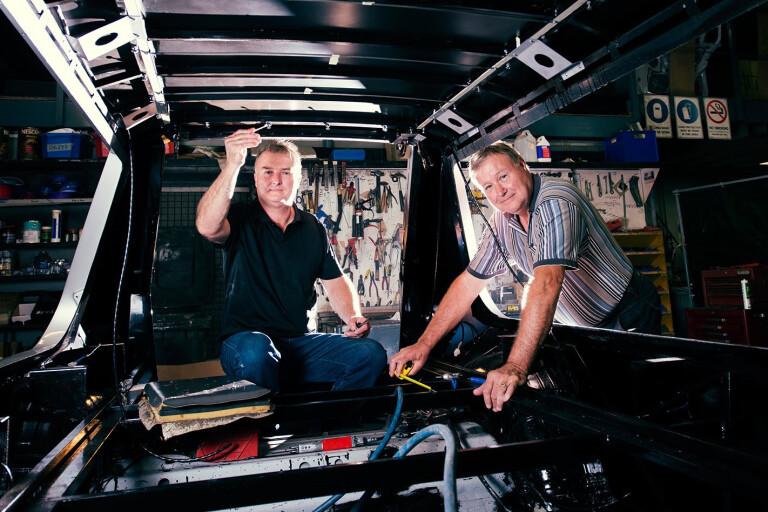
THE crafting by hand of bespoke steel panels is often lamented as a thing of the past. At Sydney firm WD Hadley Pty Ltd, traditional coachbuilding methods have been a dying art since 1965 – and not in the way you’d think.
Walter ‘Wal’ Hadley worked as a coachbuilder at the famous London firm of Hooper’s. Says son Gary: “Back then, when they left school at 14, it was, ‘Woodwork or metalwork?’ Dad did the timber body frames.”
Wal migrated to Australia in 1957, finding work in Sydney at WG Smith, a truck body builder. There, he taught himself to weld and work with steel, and applied his skills to the company’s line of hearses. He soon caught the attention of racing and sports car constructor Guy Buckingham, for whom Hadley began building aluminium bodies.
Racing driver Jack Allen enticed Hadley to go into business in 1963, building truck and tractor cabins and Hadley’s real passion, automotive coachwork. At his Smithfield premises, Hadley built aluminium bodies for Frank Matich’s SR3 sports-racing car (1967), the Gvang Steam Car (1972) and the mid-engined Triad (1984). But the real business, and Wal’s specialty, was hearses.
Sons Gary and Wayne were drafted into the business, which in 53 years has built more than 500 hearses for funeral directors. The way Gary tells it, a lot has changed – and a lot hasn’t.
“When Dad started, he was building on Chevrolets and Dodges that were built here by AMI,” Gary says. “Then the unibody Fairlane came out [’67] and he went to those. A few funeral directors used the Ford Falcon station wagon with the drop-down tailgate … then Ford brought out the XD Falcon with the lift-up tailgate and that changed the industry. It was Ford for years and years, until they dropped the Fairlane and the wagon. All our customers went over to Holden and that’s what we do the most today.”
He’s now well aware that the Holden Commodore has its own funeral appointment. “We’re hoping there’ll be a nice Cadillac come here, which would be a brilliant vehicle to work on.”
Gary, 61, says 99 percent of hearses are based on new vehicles. A recent exception was a Bentley Spur, also unusual in that it wasn’t subjected to a wheelbase stretch. “We only extended the back, mainly because the wiring loom was as thick as my arm and it would have been a nightmare.”
Hadley’s workshop has a four-bay production line. A car is almost completely stripped out, then cut in half. The wheelbase is stretched and the chassis and rear bodywork reinforced with a load-bearing steel tube spaceframe. The hand-formed panels, all in steel, are applied and the car painted and trimmed.
Suspension and tyres are uprated, but Hadley says the additional weight (up to 750kg) is no different to towing a loaded box-trailer.
“Some customers keep their hearses for 15, 20 years,” Gary says. “But the ones who are switched on turn them over in five. That way they can still get a good dollar and afford to have a new one.”

COMMENTS